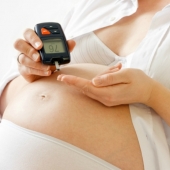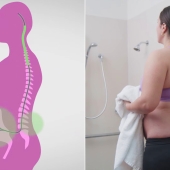Pregnancy is the time during which one or more offspring develops inside a woman. A multiple pregnancy involves more than one offspring, such as with twins. Pregnancy can occur by sexual intercourse or assisted reproductive technology. It usually lasts around 40 weeks from the last menstrual period (LMP) and ends in childbirth.
Pregnancy is typically divided into three trimesters. The first trimester is from week one through 12 and includes conception. Conception is when the sperm fertilizes the egg. The fertilized egg then travels down the fallopian tube and attaches to the inside of the uterus, where it begins to form the fetus and placenta.
The first trimester carries the highest risk of miscarriage (natural death of embryo or fetus). The second trimester is from week 13 through 28. Around the middle of the second trimester, movement of the fetus may be felt. At 28 weeks, more than 90% of babies can survive outside of the uterus if provided high-quality medical care. The third trimester is from 29 weeks through 40 weeks.
Prenatal care improves pregnancy outcomes. Prenatal care may include taking extra folic acid, avoiding drugs and alcohol, regular exercise, blood tests, and regular physical examinations.
Complications of pregnancy may include high blood pressure of pregnancy, gestational diabetes, iron-deficiency anemia, and severe nausea and vomiting among others. Term pregnancy is 37 to 41 weeks, with early term being 37 and 38 weeks, full term 39 and 40 weeks, and late term 41 weeks.
After 41 weeks, it is known as post term. Babies born before 37 weeks are preterm and are at higher risk of health problems such as cerebral palsy. Delivery before 39 weeks by labor induction or caesarean section is not recommended unless required for other medical reasons.
- 1438 views













